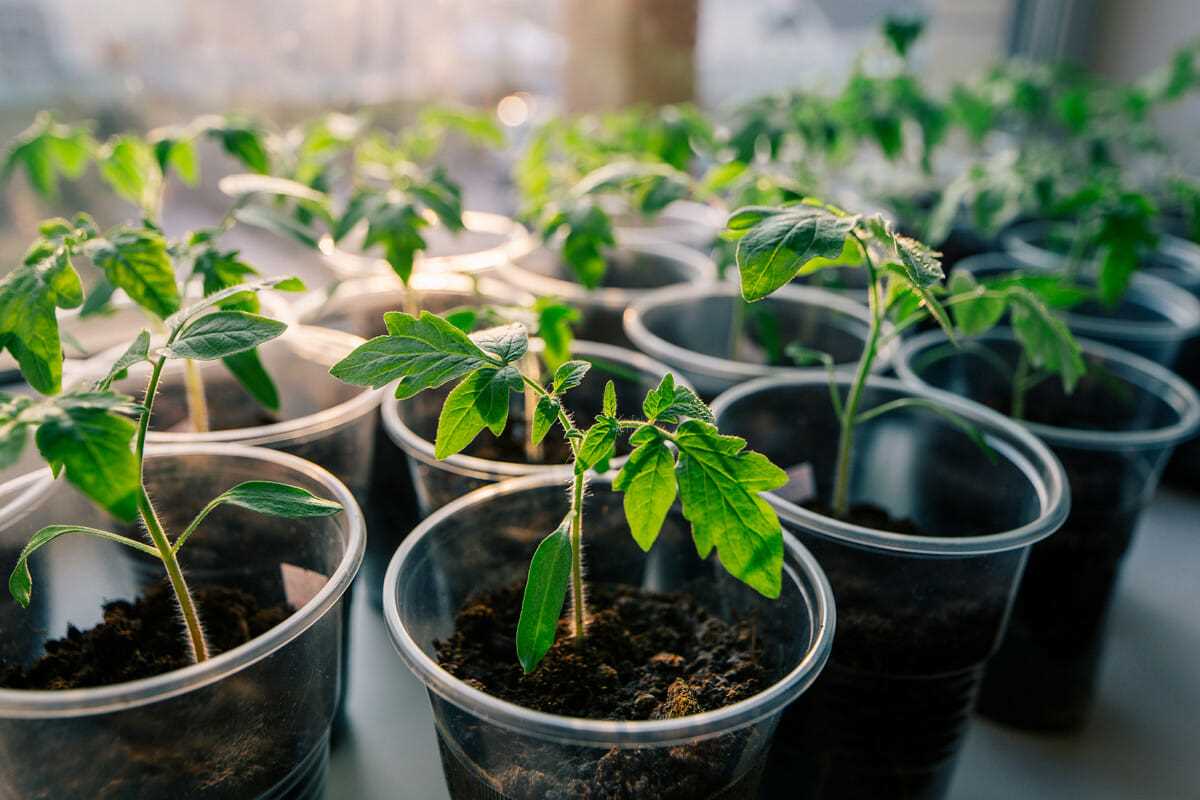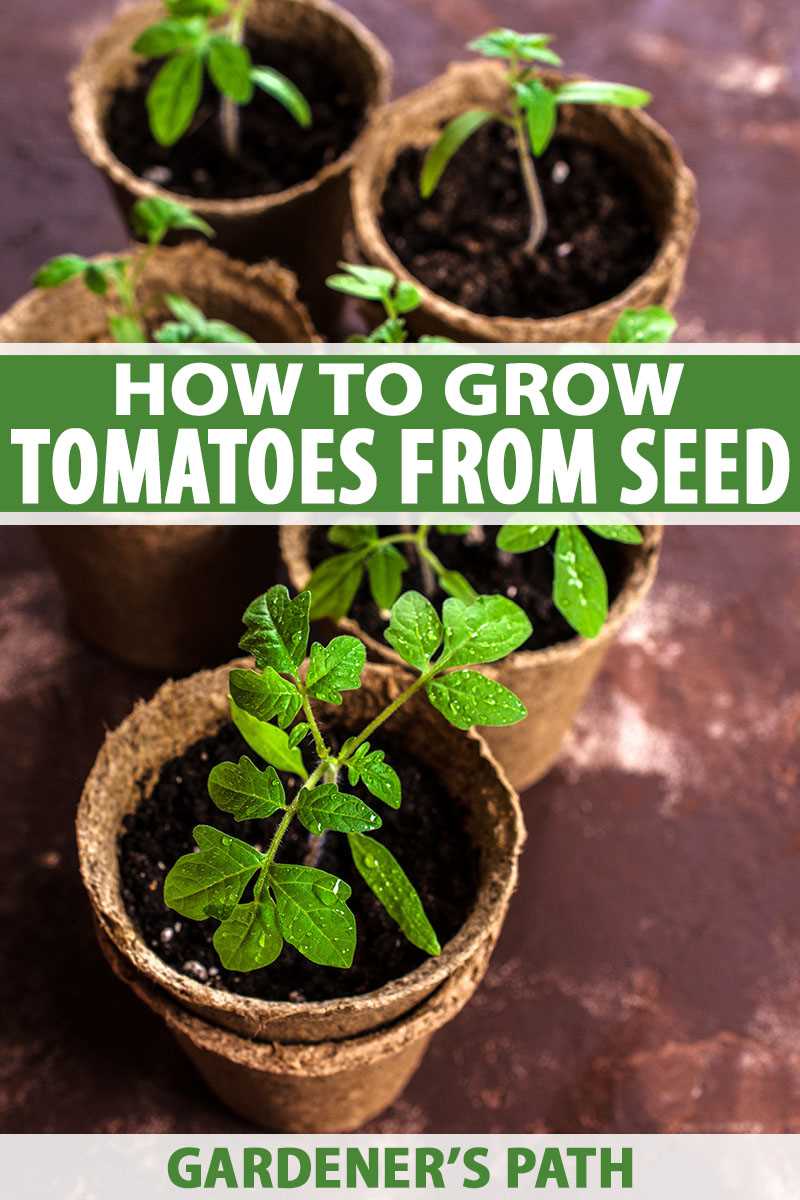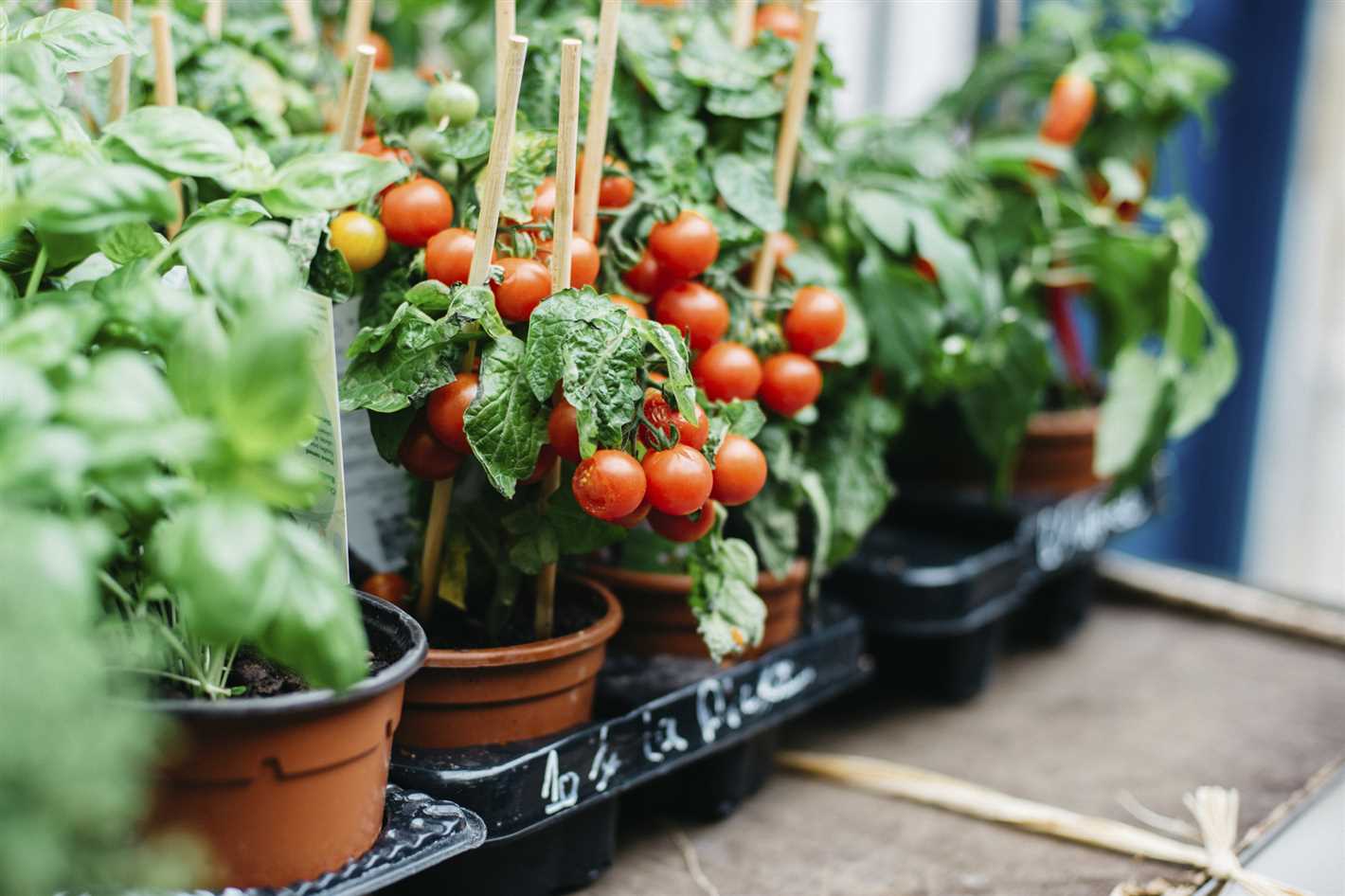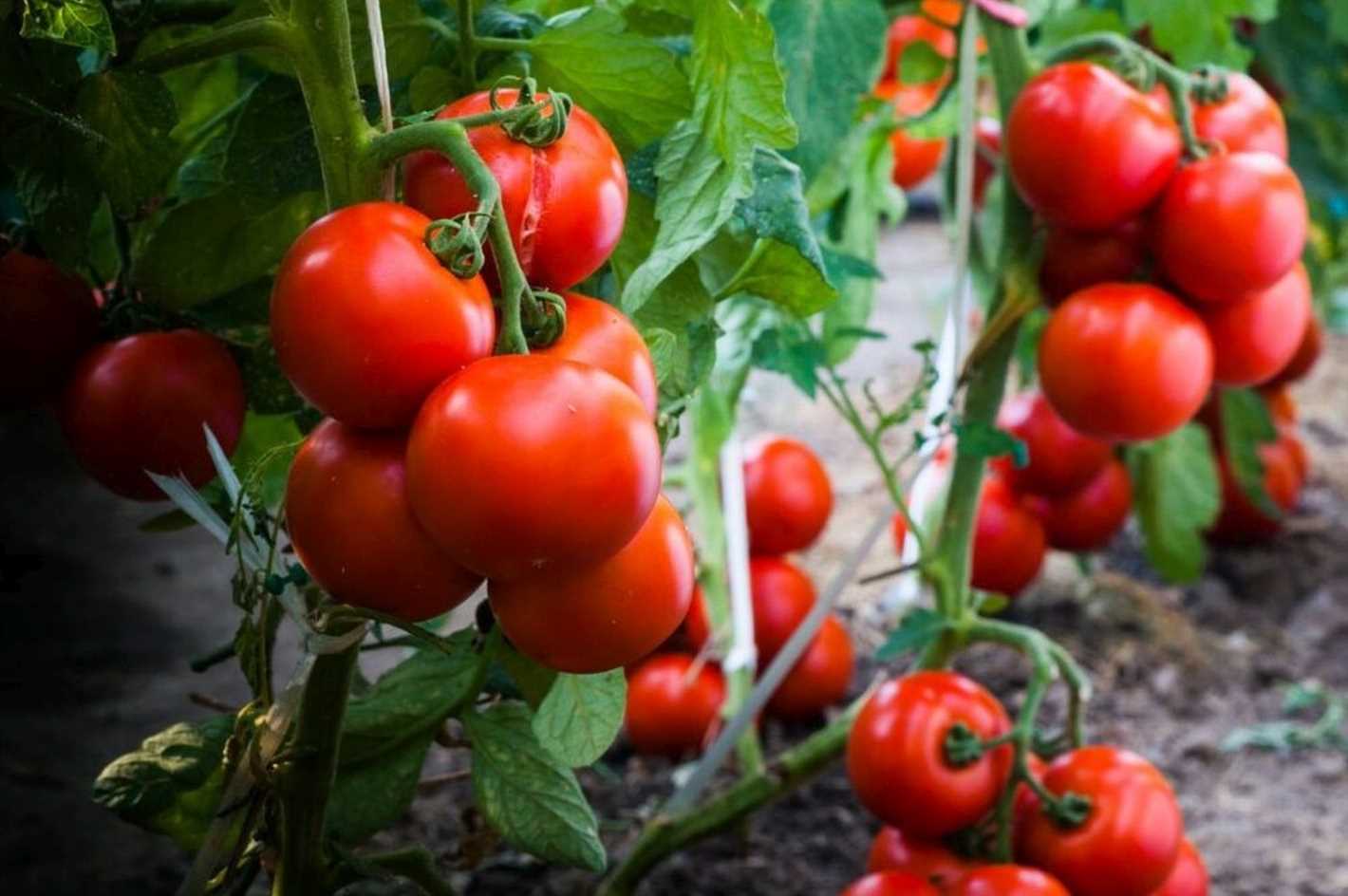- Conclusion
- Understanding Tomato Seeds
- Choosing Tomato Seeds
- Germination
- Seed Starting
- Storage
- Seed Viability
- Conclusion
- Factors Affecting Tomato Seedling Growth
- The Importance of Timing
- 1. Germination Rate
- 2. Seedling Health
- 3. Outdoor Conditions
- 4. Successive Plantings
- 5. Variety-Specific Factors
- Calculating the Best Sowing Time
- Maintaining Seedling Growth
- Preventing Overgrown Seedlings
- “Question-Answer”
- When is the best time to sow tomato seeds?
- How can I determine the last frost date in my area?
- What happens if I sow tomato seeds too early?
- Can I sow tomato seeds directly into the ground?
- How long does it take for tomato seeds to germinate?
- Can I sow tomato seeds too late?
- Is it possible to sow tomato seeds indoors year-round?
- “Video” 7 Solutions For Stunted Seedlings
Tomatoes are a popular vegetable to grow in home gardens due to their delicious flavor and versatility in cooking. To ensure a successful tomato crop, it’s important to sow the seeds at the right time. Sowing tomato seeds too early can result in overgrown seedlings that are difficult to transplant, while sowing them too late can delay harvest and reduce overall yield. This article will guide you through the process of calculating the perfect timing for sowing tomato seeds to avoid overgrown seedlings.
One of the key factors to consider when determining the perfect timing for sowing tomato seeds is your location and climate. Tomatoes are warm-weather crops that require consistent temperatures above 50°F (10°C) to germinate and grow. Therefore, it’s important to understand the average last frost date in your area, as tomatoes should be transplanted outdoors after all chances of frost have passed. You can consult local gardening resources or use online tools to determine the average last frost date for your region.
Once you have determined the average last frost date, you can work backwards to calculate the ideal sowing date for your tomato seeds. Most tomato varieties require 6-8 weeks to grow from seed to transplant size. For example, if the average last frost date in your area is April 15, you should sow your tomato seeds indoors around February 15. This allows your seedlings to reach the optimum transplant size of 6-8 weeks by the time the weather is suitable for transplanting.
In addition to timing based on frost dates, it’s important to consider the specific variety of tomato you are growing. Some tomato varieties, such as cherry tomatoes, have a shorter growing season and can be sown later. Others, such as beefsteak tomatoes, require more time to mature and may need to be sown earlier. Consult the seed packet or a reliable gardening resource to determine the specific timing recommendations for your chosen tomato variety.
Conclusion

Calculating the perfect timing for sowing tomato seeds is crucial to ensure healthy and productive plants. By considering your location, average last frost date, and the specific variety you are growing, you can determine the ideal sowing date and avoid overgrown seedlings. Following these guidelines will help you achieve a successful tomato crop and enjoy the rewards of homegrown tomatoes in your favorite recipes.
Understanding Tomato Seeds
When it comes to growing tomatoes, understanding tomato seeds is essential. Tomato seeds are the first step in the process of growing tomatoes, and they play a crucial role in determining the success of your crop. Here are some key points to help you understand tomato seeds better.
Choosing Tomato Seeds
The first step in understanding tomato seeds is choosing the right variety. There are numerous tomato varieties available, each with its own characteristics. Consider factors such as flavor, size, color, disease resistance, and climate adaptability when choosing tomato seeds. Additionally, choose seeds from a reputed supplier to ensure quality and germination rates.
Germination

Germination is the process by which a seed grows into a new plant. Tomato seeds require specific conditions to germinate successfully. The ideal temperature for germinating tomato seeds is between 70-85°F (21-29°C). Planting the seeds in a seedling tray with a seed-starting mix can provide the right conditions for germination. Keep the soil consistently moist but not overly wet to avoid rotting the seeds.
Seed Starting
Tomato seeds are typically started indoors, 6-8 weeks before the last frost date in your area. This gives the plants enough time to grow and develop before transplanting them outside. Use seed trays or seedling pots filled with a sterile seed-starting mix. Plant the seeds 1/4 to 1/2 inch deep, cover them lightly with soil, and water gently. Place the trays in a warm location or use a heating mat to maintain the ideal germination temperature.
Storage

If you have extra tomato seeds leftover from a previous growing season, proper storage is crucial to ensure their viability. Tomato seeds should be stored in a cool and dry place, preferably in an airtight container. Keep the seeds away from direct sunlight and extreme temperatures. When stored correctly, tomato seeds can remain viable for several years.
Seed Viability
The viability of tomato seeds refers to their ability to germinate and grow into healthy plants. Tomato seeds have varying viability, with some seeds remaining viable for up to 5 years. However, the germination rates of older seeds tend to decrease. Perform a germination test by planting a few seeds on a damp paper towel and keeping them in a warm location. If most of the seeds sprout, the germination rate is high.
Conclusion
Understanding tomato seeds is essential for successful tomato cultivation. Choosing the right seeds, providing optimal germination conditions, and storing seeds correctly are key factors in achieving healthy tomato plants. By understanding tomato seeds better, you will be able to sow them at the perfect timing and avoid overgrown seedlings.
Factors Affecting Tomato Seedling Growth

Growing healthy tomato seedlings requires careful attention to several key factors. These factors can greatly influence the growth and development of the seedlings, ultimately impacting their overall health and productivity when transplanted into the garden. Here are some of the important factors that affect tomato seedling growth:
1. Temperature: Temperature plays a crucial role in seed germination and seedling growth. Tomato seeds germinate best at temperatures between 75-85°F (24-29°C). Once the seedlings emerge, they require a slightly cooler temperature of around 70°F (21°C) during the day and 60°F (15°C) at night for optimal growth.
2. Light: Tomato seedlings require ample light to develop into strong and sturdy plants. Insufficient light can lead to weak and leggy seedlings. Place the seedlings in a well-lit area, preferably near a south-facing window or under grow lights. Aim for 14-16 hours of bright, indirect light per day for healthy seedling growth.
3. Watering: Proper watering is crucial for the growth of tomato seedlings. Overwatering can lead to root rot and other fungal diseases, while underwatering can cause stunted growth. Water the seedlings when the top inch of the soil feels dry, and allow the soil to dry slightly between waterings. Ensure good drainage to prevent waterlogged soil.
4. Soil Quality: High-quality soil is essential for healthy seedling growth. Use a well-draining, sterile seed-starting mix that is rich in organic matter. Avoid using garden soil, as it may contain pathogens and weed seeds that can harm the seedlings. The soil pH should be around 6.0-6.5 to provide optimal nutrient availability.
5. Nutrients: Tomato seedlings require adequate nutrients for healthy growth. Start fertilizing the seedlings with a diluted, balanced fertilizer (10-10-10 or 20-20-20) when the first true leaves appear. Be careful not to over-fertilize, as excessive nutrients can lead to fertilizer burn and stunted growth. Gradually increase the fertilizer concentration as the seedlings grow.
6. Air Circulation: Good air circulation is crucial for preventing diseases and promoting strong seedling growth. Use a small fan or open a window to provide a gentle breeze that helps strengthen the stems and prevent damping off disease. Avoid overcrowding the seedlings, as this can lead to poor air circulation and increased disease pressure.
7. Transplanting: Timely transplanting is important for the growth and development of tomato seedlings. Transplant the seedlings into larger pots when they have developed 2-3 sets of true leaves. Handle the seedlings carefully to avoid damaging the roots. Transplant them into the garden or larger containers once all chances of frost have passed.
By carefully managing these factors, you can ensure optimal growth and development of your tomato seedlings, leading to healthy and productive plants in your garden.
The Importance of Timing
Timing is a crucial factor in ensuring successful tomato seed sowing and achieving healthy seedlings. Sowing seeds too early or too late can result in poor germination rates and overgrown seedlings. Understanding the optimal timing for sowing tomato seeds is essential for gardeners to maximize their chances of success.
1. Germination Rate
The timing of sowing tomato seeds is directly linked to the germination rate. Tomato seeds require specific temperature and moisture conditions to germinate successfully. If seeds are sown too early, when the soil is still cold, they may fail to germinate at all. On the other hand, sowing seeds too late can result in delayed germination and slow growth.
2. Seedling Health
Proper timing also ensures that seedlings grow in a healthy manner. Overgrown seedlings can become weak and leggy, making them more susceptible to diseases and pests. When seedlings are sown at the right time and given adequate space and light, they develop sturdy stems and leaves, which are essential for their overall health and vigor.
3. Outdoor Conditions
Considering outdoor conditions is an important part of determining the perfect timing for tomato seed sowing. Plants need to be transplanted outdoors when the risk of frost has passed and when the soil has warmed up sufficiently. Therefore, it is crucial to calculate the estimated time it takes for tomato seedlings to grow to a transplantable size and match this timing with the expected outdoor conditions.
4. Successive Plantings
By sowing tomato seeds at different times, gardeners can ensure a continuous harvest throughout the growing season. Successive plantings, also known as staggered plantings, involve sowing small batches of seeds at regular intervals. This way, there will always be a fresh batch of seedlings ready to be transplanted as older plants finish producing fruits. Proper timing is crucial for establishing a well-organized succession planting schedule.
5. Variety-Specific Factors
Lastly, the variety of tomato being grown can also influence the timing of sowing seeds. Different tomato varieties have specific growth habits and maturity rates. Some varieties take longer to reach maturity, while others are early maturing. Considering the characteristics of the chosen variety is important when determining the ideal timing for sowing seeds.
Overall, timing is a critical factor in the success of tomato seed sowing. By understanding the specific requirements of tomato seeds, considering outdoor conditions, and taking into account variety-specific factors, gardeners can calculate the perfect timing for sowing tomato seeds and avoid overgrown seedlings.
Calculating the Best Sowing Time
Calculating the best sowing time for tomato seeds is crucial in ensuring successful and healthy plant growth. It is important to sow the seeds at the right time to avoid overgrown seedlings that can become weak and unhealthy. Here are some steps to help you calculate the perfect timing for sowing tomato seeds:
- Know the tomato variety: Different tomato varieties have different growth rates and requirements. It is essential to know the specific variety you are planting to determine the optimal sowing time.
- Check the last frost date: Tomatoes are sensitive to frost, so it is important to determine the last expected frost date in your area. This information can usually be obtained from local gardening resources or meteorological services.
- Count the weeks: Once you know the last frost date, count the number of weeks required for tomato seeds to germinate and grow into healthy seedlings. This information can usually be found on the seed packet or obtained from gardening references.
- Work backwards: Subtract the number of weeks required for seed germination and growth from the last frost date to determine the best sowing time. This will give you a rough estimate of when to sow your tomato seeds.
- Consider temperature: In addition to frost dates, it is important to consider the average temperature and weather conditions in your area. Tomato seeds require warm soil and air temperatures for optimal germination and growth. Therefore, it is recommended to sow tomato seeds when the soil temperature consistently reaches around 60°F (15°C) and the air temperature remains above 50°F (10°C).
- Observe local conditions: Every region has its own microclimate, so it is important to observe the local conditions and adjust the sowing time accordingly. Factors such as altitude, sunlight exposure, and local weather patterns can affect the ideal sowing time for tomatoes.
By following these steps and considering the specific requirements of your tomato variety as well as the local conditions, you can calculate the best sowing time and increase the chances of successful tomato seed germination and healthy plant growth.
Maintaining Seedling Growth
Provide Adequate Light: Tomato seedlings require at least 14-16 hours of bright light daily for proper growth. Place them in a sunny location or provide artificial light using grow lights to ensure they get enough light.
Keep Temperature Stable: Tomato seedlings thrive in temperatures between 70-75°F (21-24°C) during the day and around 60-65°F (15-18°C) at night. Use a thermometer to monitor the temperature and make necessary adjustments to maintain a stable environment.
Water Regularly: Water seedlings when the top inch of soil feels dry. Use a watering can with a fine spout or a misting spray bottle to avoid overwatering. Keep the soil moist but not waterlogged to prevent root rot.
Fertilize Appropriately: Once seedlings develop their first set of true leaves, start feeding them with a balanced liquid fertilizer diluted to half strength. Repeat the application every two weeks to provide essential nutrients for healthy growth.
Transplant Properly: When the seedlings have grown 6-8 inches tall and have at least two sets of true leaves, they are ready for transplanting into larger containers or the garden. Handle the seedlings carefully to avoid damaging the roots.
Protect from Pests and Diseases: Inspect seedlings regularly for signs of pests or diseases. Treat any issues promptly by using organic insecticides or fungicides. Keeping seedlings in a clean and well-ventilated area can help prevent problems.
Support the Growing Stems: Once tomato seedlings start growing, provide support by gently tying them to stakes or inserting small bamboo sticks near the base of the stem. This prevents them from bending or breaking under their weight.
By following these guidelines and providing optimal conditions for tomato seedling growth, you can ensure healthy and vigorous plants that will yield a bountiful harvest.
Preventing Overgrown Seedlings
Overgrown seedlings can lead to weak plants that are more susceptible to disease and pest infestation. To prevent overgrown seedlings, it is important to follow a few key practices:
- Timing: Sow tomato seeds at the appropriate time for your specific region. It is essential to consider the last frost date and average temperatures in your area before sowing. Starting the seeds too early can result in overgrown and weak seedlings.
- Seed Starting Containers: Use containers that provide enough space for root growth, but not excessively large. Using containers that are too large for the seedlings can encourage excessive root growth and lead to overgrown plants.
- Sowing Depth: Plant tomato seeds at the recommended depth, usually around 1/4 inch deep. Planting them too deep can delay germination and result in weaker seedlings. Conversely, planting them too shallowly can expose the roots and affect the overall growth of the seedlings.
- Light: Provide adequate light for the tomato seedlings. Insufficient light can cause them to stretch and become leggy. Place the seedlings near a south-facing window or use grow lights to ensure they receive 12-14 hours of light per day.
- Temperature: Maintain the proper temperature for seed germination and seedling growth. Tomato seeds typically germinate best at temperatures between 75-85°F (24-29°C). Once the seedlings emerge, lowering the temperature to around 70°F (21°C) during the day and 10°F (5°C) lower at night helps prevent overgrowth.
- Watering: Water the seedlings carefully to avoid overwatering. Overwatering can lead to conditions like damping off disease, which can kill the seedlings. Keep the soil moist but not waterlogged. It is essential to water from the bottom or use a mister to prevent disturbance to the seedlings.
- Hardening Off: Before transplanting the seedlings into the garden, gradually expose them to outdoor conditions through a process called hardening off. This process helps the seedlings acclimate to the outdoor environment, preventing transplant shock and stunting of growth.
By following these practices, you can ensure that your tomato seedlings grow healthy and strong without becoming overgrown. This will result in robust plants that produce plenty of delicious tomatoes.
“Question-Answer”
When is the best time to sow tomato seeds?
The best time to sow tomato seeds is typically 6-8 weeks before the last frost date in your area.
How can I determine the last frost date in my area?
You can determine the last frost date in your area by consulting a local gardening resource or contacting your local agricultural extension office.
What happens if I sow tomato seeds too early?
If you sow tomato seeds too early, you risk having overgrown seedlings by the time it’s warm enough to transplant them outdoors. The seedlings may become leggy and weak due to lack of space and light.
Can I sow tomato seeds directly into the ground?
While it’s possible to sow tomato seeds directly into the ground, it’s generally recommended to start them indoors first. This allows for better control of temperature, light, and moisture, resulting in stronger, healthier seedlings.
How long does it take for tomato seeds to germinate?
Tomato seeds typically take 5-10 days to germinate, depending on the variety and the conditions provided.
Can I sow tomato seeds too late?
If you sow tomato seeds too late, your plants may not have enough time to grow and produce a full harvest before the weather turns cold again. It’s important to consider the average length of your growing season when determining the best time to sow.
Is it possible to sow tomato seeds indoors year-round?
While it is possible to sow tomato seeds indoors year-round, it’s generally recommended to align your sowing schedule with the appropriate outdoor planting time for your area. This ensures that your plants have enough time to grow and thrive when they are finally transplanted outside.







